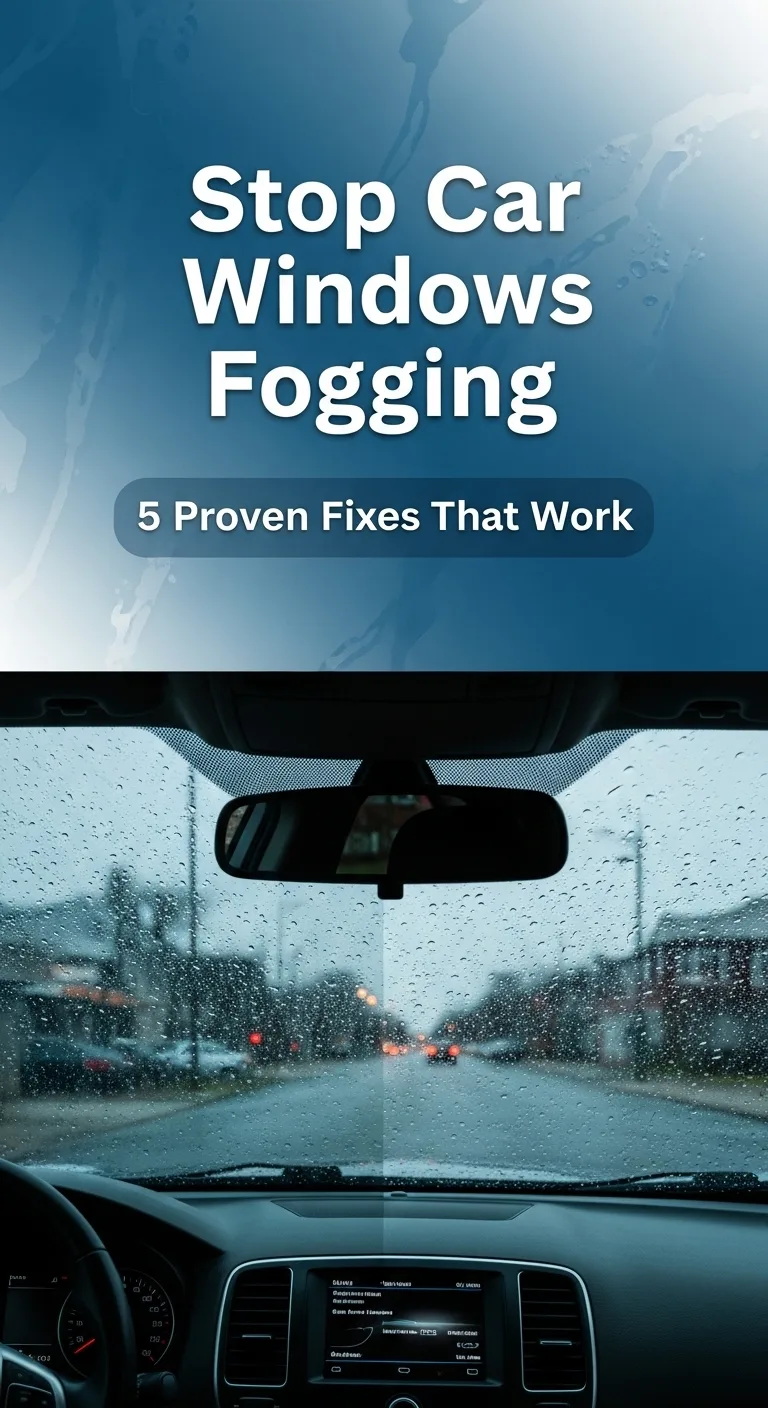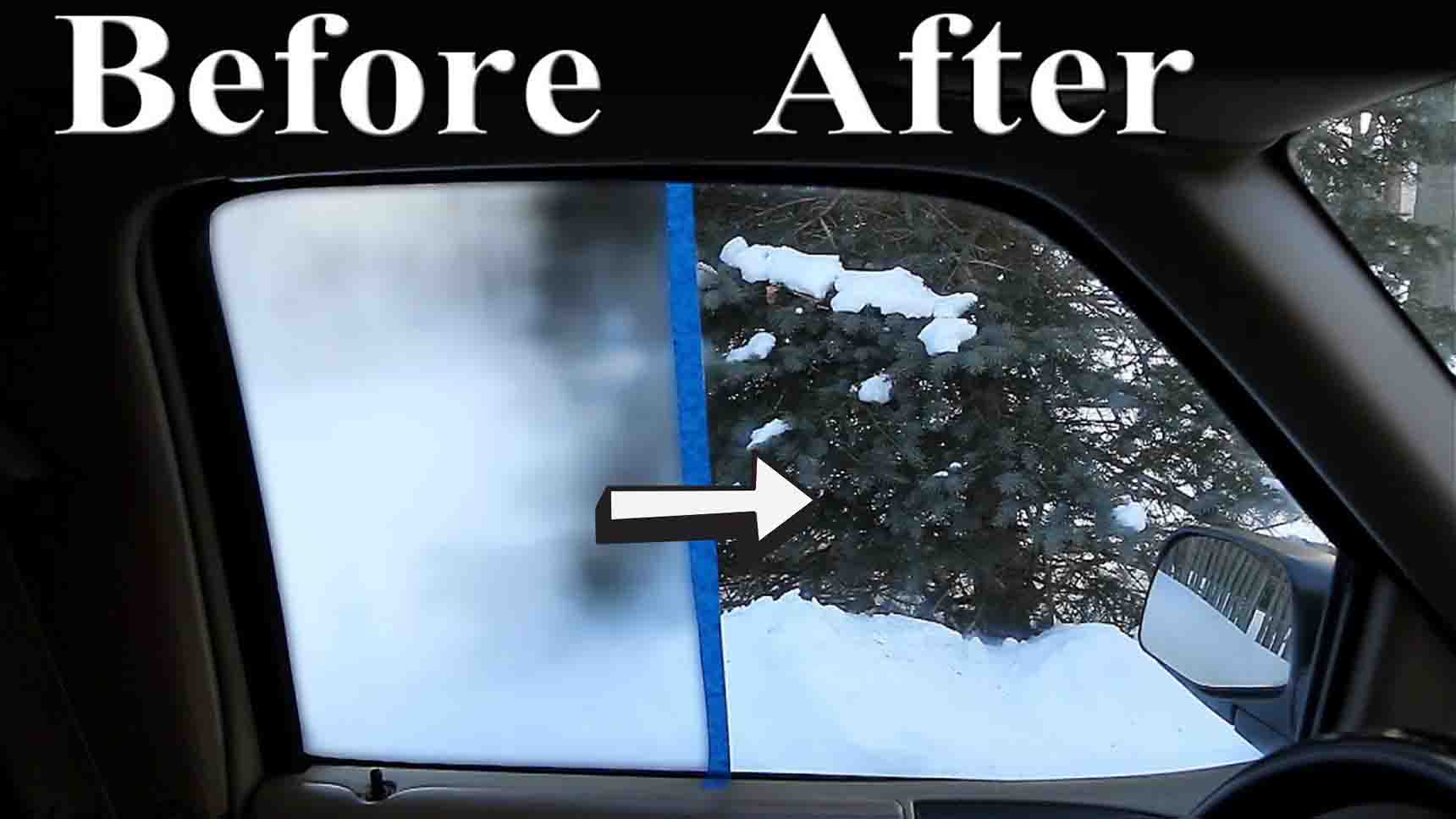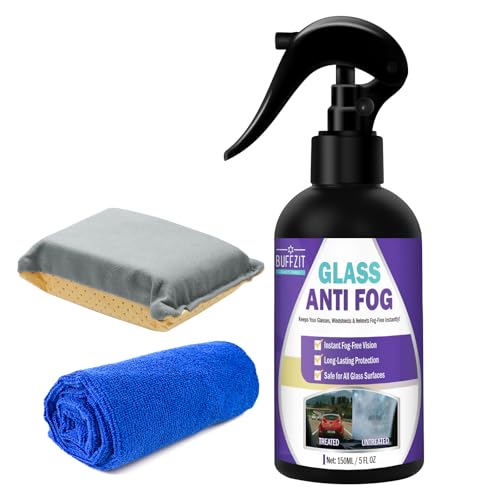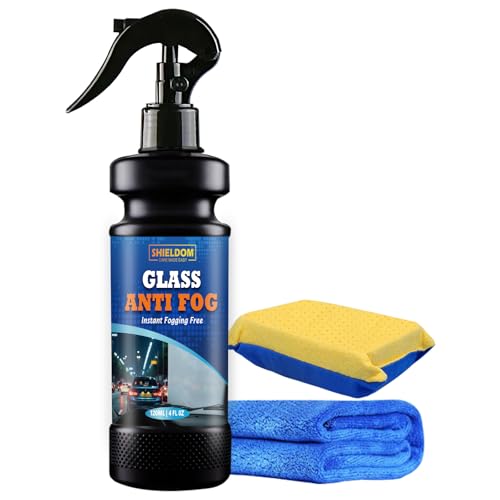Fighting for visibility through a suddenly opaque windshield is a frustrating and dangerous experience every driver knows. That creeping, view-blocking film appears at the worst times—on cold mornings, during a downpour, or when you’re already running late. You’re left wondering how do you stop car windows from fogging up effectively and, more importantly, quickly?
To stop car windows from fogging, you must either reduce the humidity inside your car or raise the temperature of the glass to match the interior air. The fastest method is to use your car’s air conditioner (A/C) to dehumidify the air while directing the fan towards the windshield.
This definitive guide, updated for 2025, moves beyond temporary fixes. Leveraging extensive analysis of automotive systems and proven techniques, we’ll unpack the simple science behind the fog and provide a complete toolkit. You’ll learn the immediate steps to clear your view in seconds, the daily habits to prevent fog from ever forming, and how to spot deeper issues if the problem persists.
Key Facts
- The Core Cause: Fog is simply condensation, which occurs when warm, humid air inside your car—from your breath or wet items—hits the colder window glass.
- A/C is a Dehumidifier: The most critical function of your car’s air conditioner in this scenario isn’t cooling, but drying the air. Studies show it’s the most effective tool against fog, even in winter.
- Recirculation is the Enemy: Using the air recirculation button traps the moist air inside, making the fogging problem significantly worse. Fresh air mode is essential for bringing in drier outside air.
- Cleanliness Matters: A dirty windshield fogs up faster. Data from automotive detailers like Torque Detail and Feldman Chevy of Lansing confirms that dirt and grime give water droplets more to cling to.
- A Sweet Smell is a Warning: If your defroster emits a sweet, syrupy smell, it could signal a coolant leak in your heater core—a serious issue that requires a mechanic’s attention.
Why Your Car Windows Fog Up: The Simple Science
Car windows fog up when warm, humid air inside your car hits the colder window glass, causing the moisture in the air to turn into tiny water droplets, or condensation. Ever notice it’s worst on a rainy day or with a car full of people? Here’s exactly why.

The phenomenon is a simple battle between temperature and moisture. Think of it as three key components coming together to obstruct your view:
- Warm, Moist Interior Air: The air inside your car cabin is warmed by your body heat and filled with moisture from every breath you and your passengers exhale. Wet coats, umbrellas, soggy floor mats, and even a hot coffee add to this humidity.
- Cold Exterior Glass: On a cool or rainy day, the surface of your car’s windows is chilled by the outside weather, making it one of the coldest surfaces inside the cabin.
- The Result: Condensation: When the warm, humid air inside makes contact with the cold glass, the air rapidly cools. It can no longer hold all its moisture, so the excess water vapor transforms into a liquid film of tiny droplets on the glass. This is the fog you see.
The Immediate Fix: How to Clear Foggy Windows Fast While Driving
To quickly clear foggy windows, turn on your car’s A/C to dehumidify the air, switch from recirculation to fresh air mode, and direct the high-speed fan towards the windshield. When you need a clear view right now, this is the fastest and most effective sequence of actions.

Forget wiping the window with your sleeve, which only smears the moisture and leaves streaks. Use your car’s built-in climate control system like a pro with these steps:
- Turn On Your Air Conditioner (A/C). This is the most important step. The A/C system is an excellent dehumidifier, actively pulling moisture out of the cabin air. Pro Tip: It feels wrong to blast the A/C in winter, but it’s the fastest way to dry out the air. Trust the process!
- Switch to Fresh Air Intake. Turn off the recirculation button (the icon usually shows a car with an arrow looping inside it). You want the icon with an arrow entering the car from the outside. This stops you from recycling the same humid air and instead brings in drier air from outside.
- Turn the Fan Speed Up. Set the fan to a high speed to maximize airflow over the foggy glass. The moving air helps evaporate the condensation much faster.
- Direct Airflow to the Windshield. Use your controls to aim all that dry, moving air directly at the windshield and side window vents. Most cars have a dedicated “defrost” or “defog” button that does this automatically. While you can use heat to help evaporate the moisture, starting with cool, dry A/C air is often the quickest initial attack.
Why Using Fresh Air is Crucial
This is a critical point that many drivers overlook. Using the wrong setting can actively make your fog problem worse, trapping you in a cycle of wiping and re-fogging. The difference between the two modes is simple but profound.
Recirculation mode traps and re-uses the moist air from your breath, making fog worse. Fresh air mode brings in drier outside air to solve the problem.
Think of the recirculation setting as locking the doors to keep the problem inside. The fresh air setting opens a window to let the problem out and bring the solution in. For fighting fog, always choose fresh air.
Proactive Prevention: 3 Daily Habits to Stop Fog Before It Starts
Prevent fog by regularly cleaning the inside of your windows, removing wet items like umbrellas and coats from the cabin, and using a moisture absorber like silica gel. The best way to deal with foggy windows is to create an environment where fog struggles to form in the first place. These three simple habits can dramatically reduce how often you have to reach for the defroster.
- Keep Interior Glass Spotless
Quick Fact: A dirty windshield fogs up faster because the grime gives water droplets more to grab onto. Microscopic dirt, dust, and oil residue on the inside of your glass create a perfect textured surface for condensation to form and cling to. By keeping the glass perfectly clean with a quality automotive glass cleaner and a microfiber towel, you create a smoother surface that is less prone to fogging. -
Remove Damp Items from the Car
Your car can quickly become a terrarium if you’re not careful. Every wet item you leave inside slowly releases moisture into the air, raising the overall humidity. Make it a habit to remove potential moisture sources at the end of every trip, including:- Wet coats, jackets, and hats
- Damp umbrellas
- Snow-covered boots
- Soggy floor mats
- Leftover drink cups
- Use a Moisture Absorber
For a powerful, passive defense against humidity, place a moisture absorber inside your vehicle. These products work around the clock to pull water vapor out of the air. You can buy commercial dehumidifying products, or you can easily make your own. A popular and effective DIY method is to fill a sock with silica-based crystal kitty litter, tie it off, and place it on your dashboard or under a seat. The silica crystals are a desiccant, meaning they are highly effective at absorbing ambient moisture.
DIY & Commercial Anti-Fog Treatments: What Actually Works
Applying a thin layer of shaving cream and wiping it off, using a commercial anti-fog spray, or cleaning with a vinegar/water solution can all create a temporary barrier on your windows to prevent fog. These treatments work by leaving behind an invisible, super-thin film on the glass. This film, known as a surfactant, reduces the surface tension of the water, preventing the tiny droplets from beading up into a fog and instead forcing them to spread out into a transparent sheet you can see through.
Ever wondered if the old shaving cream trick really works? The answer is yes, and here’s the science behind it, along with other effective options.
| Method | How It Works | Pro/Con |
|---|---|---|
| Shaving Cream | The soap and other chemicals leave a transparent surfactant film on the glass after being wiped away. | Pro: Extremely cheap or free. Con: Temporary; can leave a slight haze if not buffed off completely. |
| Vinegar/Alcohol Spray | A simple solution (e.g., 2 parts water to 1 part vinegar) cleans the glass and leaves a mild anti-fog film. | Pro: Very low-cost and uses common household items. Con: Needs frequent reapplication to remain effective. |
| Commercial Anti-Fog | Specially formulated chemical sprays create a durable, clear barrier that repels fog. | Pro: Highly effective and lasts longer than DIY methods. Con: Costs money and requires purchasing a dedicated product. |
To make these preventative steps even easier, having the right tools on hand can make all the difference. Investing in a quality anti-fog spray or a set of microfiber cloths can simplify your routine and ensure a crystal-clear view every time.
Troubleshooting Persistent Fog: Checking for Deeper Issues
If fog persists, check for a sweet smell (coolant leak), inspect for damaged window seals, or replace a clogged cabin air filter, as these can be underlying causes. If you’ve tried all the standard fixes and your windows still fog up relentlessly, your car might have an underlying mechanical issue that’s introducing excess moisture into the cabin.
If your windows fog up with a strange, sweet smell, your car might be trying to tell you something important. Are you listening? Here are the key things to check when you’re facing a stubborn fog problem.
- Check for a Sweet Smell: This is the tell-tale sign of a heater core leak. The heater core is like a small radiator behind your dashboard that uses hot engine coolant to warm the cabin air. If it leaks, it can release coolant vapor (which contains ethylene glycol) into your ventilation system, causing a persistent, hard-to-clear fog and a distinct sweet odor. This requires professional repair.
- Inspect Window and Door Seals: Over time, the rubber seals around your windows, doors, and sunroof can become cracked, brittle, or damaged. These imperfections create a pathway for rain and moisture to seep into the car’s interior, leading to a constantly humid environment perfect for window fogging.
- Replace Your Cabin Air Filter: The cabin air filter cleans the outside air before it enters your car’s HVAC system. When this filter becomes clogged with dirt, leaves, and other debris, it severely restricts airflow. According to automotive resources like Car Talk, this poor airflow hampers your defroster’s ability to work effectively and can trap moisture within the system. Replacing it is often an easy and inexpensive fix that can make a huge difference.
FAQs About how do you stop car windows from fogging up
How do I stop my car windows from fogging up in the rain?
Use your car’s A/C. It is the most effective tool for removing moisture from the air, which is the primary cause of fog during rainy weather. Rain creates a high-humidity environment both outside and inside your car. Running the air conditioner, even with the temperature set to warm, will pull that excess moisture out of the cabin air, clearing the glass quickly and keeping it clear.
Will leaving a window cracked open stop fog?
Yes, cracking a window helps by allowing moist interior air to escape and drier outside air to enter, which helps balance the temperature and humidity. This is a very effective, low-tech solution, especially when you first get in the car or in mild weather. It directly addresses both root causes of fog: the temperature difference and the excess interior humidity.
Does rubbing alcohol really keep windows from fogging up?
Rubbing alcohol (mixed with water) can work as a quick, temporary cleaner and anti-fog agent, but it is not a long-lasting solution like commercial products. While it can help clean the glass and provide a brief anti-fog effect, it evaporates quickly and will need to be reapplied often. It’s best seen as a quick fix if you have nothing else on hand, not a primary prevention strategy.
How do you stop car windows from fogging up overnight?
To prevent overnight fog, ensure the car’s interior is dry by removing wet items, and consider airing out the car for a few minutes before parking to replace warm, moist air with cool, dry air. The goal is to minimize the moisture trapped inside when you leave the car. Using a desiccant like a sock filled with kitty litter on the dash can also absorb ambient moisture overnight.
A Clear View Ahead: Your Fog-Free Driving Plan
Mastering your car’s climate controls and adopting a few simple habits is all it takes to conquer foggy windows for good. You no longer have to be a victim of the weather; you have a complete toolkit to ensure a safe, clear view on every drive. By understanding the “why” behind the fog, you can effectively deploy the “how” to stop it.
Take these proven fixes and make foggy windows a problem of the past. Drive safely and with a crystal-clear view!
- Act Now: Use your A/C and Fresh Air mode for immediate clearing the moment fog appears. This is your fastest, most powerful in-the-moment fix.
- Prevent Later: Keep your interior glass spotless and remove any wet items from the cabin to drastically reduce the chances of fog forming in the first place.
- Troubleshoot Smart: If the fog is constant and hard to clear, listen to your car. Check for a sweet smell or consider replacing your cabin air filter to solve deeper issues.
Last update on 2025-11-26 / Affiliate links / Images from Amazon Product Advertising API













